Are you curious about blue and green birds? This article will give an overview of where they can be found, their diet, and the number of varieties available.
Blue-green birds are a striking presence among the myriad avian species. Their vivid hues and unique features set them apart from their peers—from elegant Green Jays and parrots to Greater Blue-Eared Starlings; these spectacular species never cease to capture birders’ and nature lovers’ interest.
With their captivating plumage and charismatic behaviors, blue-green birds add an exciting and colorful dimension to birdwatching experiences.
Begin our journey into the intriguing world of these stunning birds by uncovering their elegance and allure,Blue and green birds.

Blue and Green Birds
How Many Types Of Blue Green Birds Are Found In The World?
There are many types of blue green birds in the world among them we will mention 25 blue green birds here:
- Green Jay
- White-cheeked Turaco
- Blue-headed Parrot
- Greater Blue-eared Starling
- Nicobar Pigeon
- Paradise Tanager
- Green-breasted Mango
- Green-headed Tanager
- Blue-bellied Parrot
- Blue-naped Chlorophonia
- Blue-Faced Honeyeater
- Takahe
- Blue Dacnis
- Pacific Parrotlet
- Blue-throated Barbet
- American Purple Gallinule
- Rainbow Lorikeet
- Blue-Tit
- Indian Peafowl
- Asian Green Bee-Eater
- Swallow-tailed Hummingbird
- Emerald Toucanet
- White-necked Jacobin
- Double-eyed Fig Parrot
- Eclectus Parrot
Green Jay
Green Jays are medium-sized birds distinguished by a predominantly green body and striking blue heads and bellies, boasting vibrant feathers of deep blue tail feathers with royal blue plumage on their bellies, olive green wings, deep blue tail feathers, and royal blue plumage on their wings.
Native to central and South America, these intelligent birds can often be found year-round in Southern Texas of the USA.Small birds, often seen in pairs or small groups, are known to use their vibrant blue and green colors to blend in seamlessly with their surroundings.
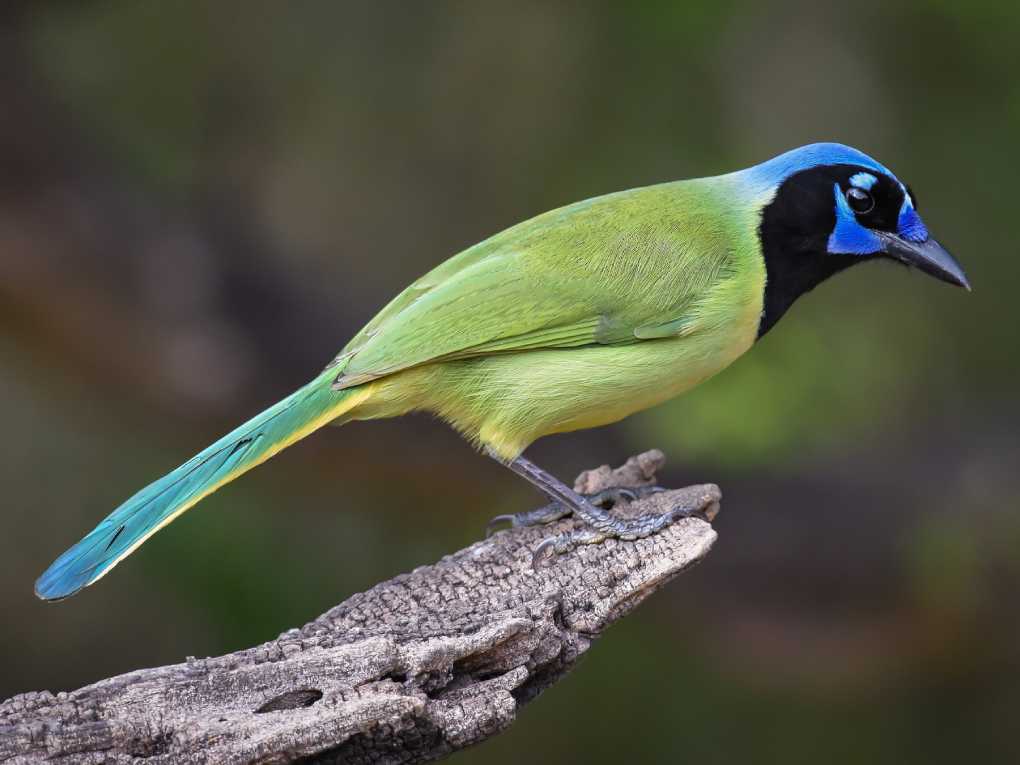
Green Jay
These breathtaking blue-green birds, commonly known as green jays, feature mostly green bodies with blue heads. Distinguished by their striking upperparts of blue-green feathers, these omnivorous birds feed on insects, small vertebrates, seeds, and fruit, sometimes using sticks as tools to extract insects from tree bark.
White-cheeked Turaco
The White-cheeked Turaco is a remarkable bird easily identified by its vivid blue and green plumage, highlighted by white patches around its eyes and neck. Boasting orange-red bills and eye rings as well as blue-green crests, these birds make a sight to behold across Africa’s forests and valleys,Blue and green birds.
White-cheeked turacos can often be seen in tall forests, riverside forests, and wooded valleys of countries like Eritrea, Ethiopia, South Sudan, and Sudan. Due to their unique coloring and markings, these birds are a favorite sighting among birdwatchers and nature enthusiasts in these regions.
White-cheeked turacos are prized species that contribute significantly to Africa’s diverse and vibrant ecosystem. Witnessing one in its natural environment will surely be an unforgettable experience for anyone with an appreciation for wildlife or the great outdoors.
White-cheeked turacos are birds native to East African forests, where they forage for fruits, plants, and insects. Although not particularly strong fliers, these birds are adept runners capable of swiftly traversing treetops,Blue and green birds.
White-cheeked Turacos are monogamous birds that form lifelong pair bonds, taking turns incubating their two or three-egg nests.
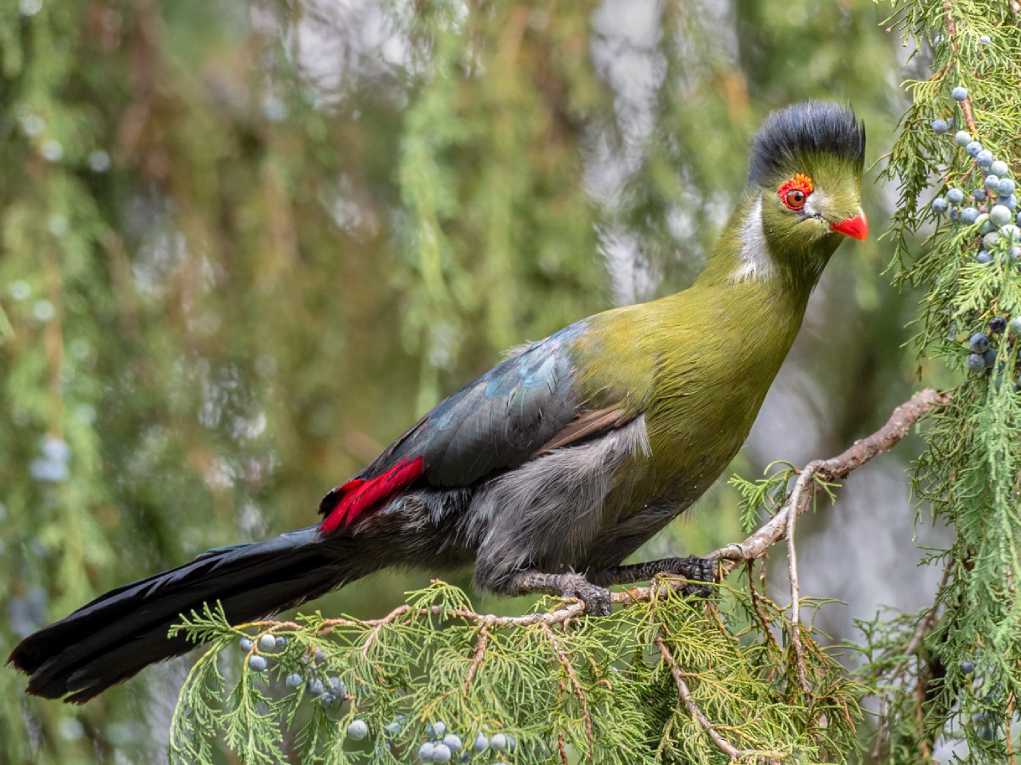
White-cheeked Turaco
If faced with danger, White-cheeked Turacos freeze before taking flight swiftly with powerful wing flaps showcasing their striking red wings – truly captivating species to observe in their natural environment! With such striking looks and interesting behaviors, these fascinating birds make White-cheeked Turacos an impressive species to observe!
| Turaco Facts | |
|---|---|
| Prey | They eat fruit, plant matter, and some insects |
| Main Prey | Fruit, such as parasol and waterberry |
| Name Of Young | Chicks |
| Group Behavior | Social |
| Fun Fact | Their name means “banana-eater,” but they rarely ever eat bananas. |
| Estimated Population Size | Unknown |
| Biggest Threat | Habitat loss, hybridization, trade, and hunting. |
| Most Distinctive Feature | Bright plumage |
| Distinctive Feature | Loud alarm calls |
| Wingspan | 8 inches |
| Incubation Period | 16 to 31 days |
| Age Of Fledgling | 4 to 6 weeks old |
| Habitat | Tropical and evergreen forests, woodlands, and savannas |
| Predators | Eagles and chimpanzees |
| Diet | Omnivore |
| Lifestyle | Diurnal |
| Favorite Food | Fruit |
| Type | Bird |
| Common Name | Turaco |
| Special Features | Outer toes that bend forward and backward |
| Number Of Species | 23 |
| Location | Sub-Saharan Africa |
| Average Clutch Size | 2 |
| Nesting Location | Platform made of twigs, placed high in trees |
| Turaco Physical Characteristics | |
| Color | Brown, Grey, Red, Blue, Green, Purple |
| Skin Type | Feathers |
| Lifespan | Up to 37 years |
| Weight | Up to one pound |
| Length | 16 to 30 inches |
| Age of Sexual Maturity | One year |
Blue-headed Parrot
Blue-headed parrots (blue-headed pionus) are medium-sized birds found throughout Central and South America’s forests and semi-open areas. These vibrant birds are notable for their eye-catching blue head plumage, which contrasts beautifully with their lush green feathers.
Blue-headed Parrots are known for their vibrant feathers, which are made possible thanks to a bacteria-resistant pigment called Psittacofulvins. This unique dye gives their feathers their characteristic vibrant blue and green colors and makes these birds stunning species to see in their natural habitats.
Blue-headed Parrots are beloved companions among bird enthusiasts worldwide. They are beloved pets with lively personalities and social dispositions that make them incredibly social creatures. Their intelligence, attractive appearance, and ability to mimic sounds make them beloved pets around the globe,Blue and green birds.
Blue-headed parrots are herbivorous animals that primarily feed on fruit, seeds, and occasionally grain, making them essential to their ecosystem’s food chain. Blue-headed parrots typically nest in cavities using cavity nesting techniques, laying three to five white eggs at once, which their female partner incubates diligently before hatching out her clutch.

Blue-headed Parrot
Blue-headed Parrots are beloved pet birds due to their playful nature and ability to mimic sounds, as well as their striking appearance and engaging behavior – qualities that have made them much sought-after among bird enthusiasts and wildlife admirers.
| Parrot Scientific Classification | |
|---|---|
| Kingdom | Animalia |
| Phylum | Chordata |
| Class | Aves |
| Order | Psittaciformes |
| Family | Psittacidae |
| Parrot Locations | Africa, Asia, Central America, Eurasia, North America, Oceania, South America |
| Parrot Facts | |
|---|---|
| Main Prey | Fruit, Nuts, Seeds, Insects |
| Fun Fact | Can live for up to 100 years! |
| Distinctive Feature | Large colorful body and curved beak |
| Wingspan | 15cm – 140cm (5.9in – 56in) |
| Habitat | Rainforests and tropical jungle |
| Predators | Human, Monkeys, Large Birds |
| Diet | Omnivore |
| Lifestyle | Solitary |
| Favorite Food | Fruit |
| Type | Bird |
| Average Clutch Size | 2 |
| Slogan | Can live for up to 100 years! |
| Parrot Physical Characteristics | |
| Color | Yellow, Red, Blue, White, Green |
| Skin Type | Feathers |
| Top Speed | 15 mph |
| Lifespan | 40 – 80 years |
| Weight | 10g – 4,000g (0.02lbs – 5.9lbs) |
| Height | 8cm – 100cm (3.5in – 39in) |
Greater Blue-eared Starling
The Greater Blue-eared Starling (also known as Greater Blue-eared Glossy Starling) is an African bird species found most commonly in open woodland environments. These short-tailed birds can be identified by their glossy blue and green plumage, which features distinctive purple-blue bellies and distinct blue ear patches.
Male and female Greater Blue-eared Starlings look alike, boasting bright yellow or orange eyes and gray-black legs and feet. These social birds are famous for their noisy behavior and can often be found flocking in large numbers, sometimes mixing with other starling species.
The Greater Blue-eared Starling is a beautiful bird species that adds vibrancy and color to ecosystems where it lives.These starlings are known for their vibrant plumage, which boasts shades of blue, green, and purple and an eye-catching blue patch behind their eyes.
Greater blue-eared starlings are social birds often seen gathered together, foraging for food as a flock. These starlings are widely recognized for their beautiful songs and vocalizations which they use for communication among members of their flock.
Greater blue-eared starlings are highly versatile birds, adaptable to many habitats ranging from woodlands to savannas, with conservation efforts designed to protect both them and their environments from threats such as habitat loss and poaching,Blue and green birds.
Greater blue-eared starlings play an integral part in ecosystems by dispersing seeds and controlling insect populations; conservation measures have also been instituted in order to protect these birds against habitat loss or poaching threats.
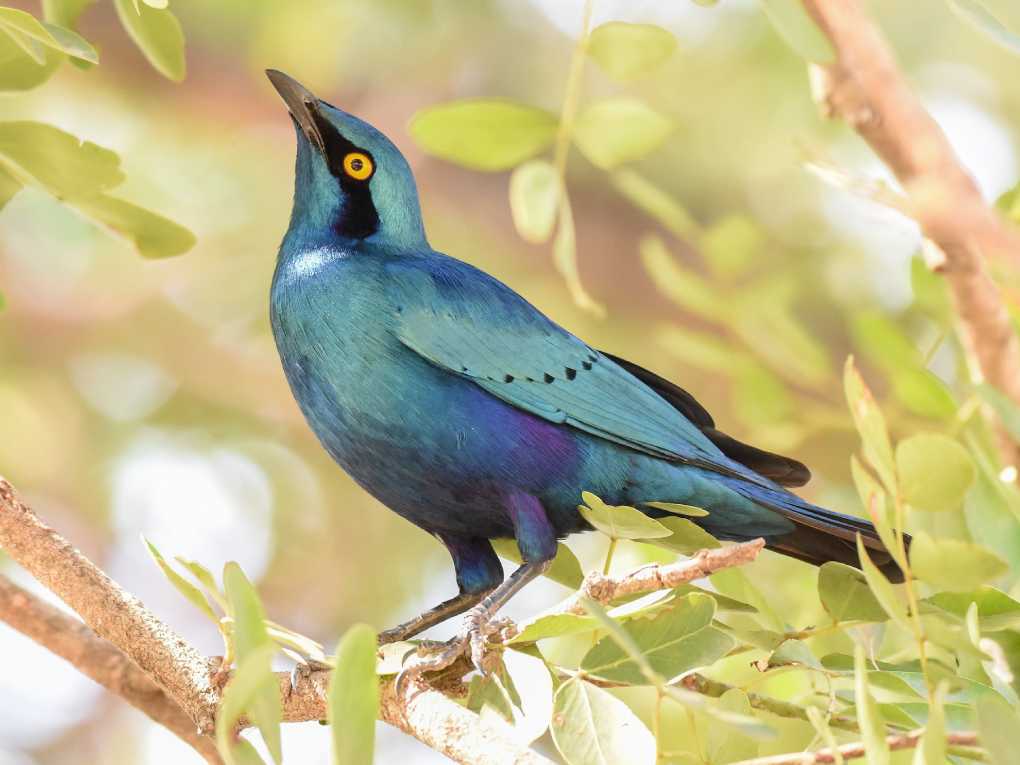
Greater Blue-eared Starling
Overall, the Greater Blue-eared Starling is an interesting and significant species that adds vibrant life and energy to Africa,Blue and green birds.
Nicobar Pigeon
Nicobar Pigeons, native to Southeast Asia, are stunning birds with metallic gray-blue “manes” of hairlike feathers adorning their heads and necks. Their long hackles contrast beautifully against their green, blue, and copper wings. Nicobar pigeons are large birds with broad wings, short tails, and black-brown eyes.
Nicobar pigeons are an intriguing species to observe in nature, thanks to their muscular gizzard, which grinds food. With beautiful plumage and fascinating behavior in the wild, Nicobar pigeons make an interesting sight indeed,Blue and green birds.

Nicobar Pigeon
Their striking features and behaviors make them an irresistibly captivating subject for birdwatchers and nature enthusiasts.
| Nicobar pigeon Scientific Classification | |
|---|---|
| Kingdom | Animalia |
| Phylum | Chordata |
| Class | Aves |
| Order | Columbiformes |
| Family | Columbidae |
| Genus | Caloenas |
| Scientific Name | Caloenas nicobarica |
| Nicobar pigeon Locations | Asia, Oceania |
Paradise Tanager
Paradise Tanagers are stunning medium-sized songbirds that thrive in the lush Amazon rainforest of North South America. With light green heads, sky blue underparts, and black upper plumage resembling paradise, these birds truly exemplify their name as beautiful living examples of paradise.
Male and female Paradise Tanagers share the same colorful appearance, although males may be known for more melodic singing. With black beaks and gray legs, Paradise Tanagers make for an impressive sight in their natural habitats.
These colorful songbirds can often be found flitting about in mixed-species flocks high in the canopy of humid forests. Their diet consists of fruits, nectar, berries, and insects – showing their adaptability in foraging for food.
Paradise Tanagers play an essential role in their environment as seed dispersers and pollinators,Blue and green birds.

Paradise Tanager
Paradise Tanagers are true gems of nature, adding bright hues and melodic notes to the rich tapestry of wildlife that inhabits the Amazon rainforest.
Green-breasted Mango
The Green-breasted Mango (Mimulus polydectes) is an outstanding species of hummingbird native to Central and South America. It is known for its vibrant colors and distinct physical traits. Green-breasted mangos get their name due to their glossy bright green upperparts, which give the bird its striking appearance.
Hummingbirds of this size weigh just 0.25 ounces, making them lightweight and agile in flight.Males display bright green plumage with narrow black throats and chests framed with a beautiful blue-green border, while females sport bronze-green upper bodies, white underparts, and an easily distinguishable dark stripe on their throats.
The scientific name for Green-breasted Mangoes, “prevostii,” is taken from French naturalist Florent Prevost. These birds are well known for their impressive flying skills and ability to hover in one spot while feeding from flowers for nectar.
Overall, the Green-breasted Mango is an engaging and visually stunning species of hummingbird that adds beauty and diversity to Central and South American avian populations.
Green-breasted mangos can be found in parks, forest edges, gardens, and backyards; they regularly visit bird feeders in search of sustenance. As omnivores that consume both insects and flower nectar for sustenance.
These birds are skilled hunters with great eyesight for catching insects midair or taking advantage of spider webs to steal insects known as kleptoparasitism – when searching out food.
Green-breasted Mangos, originally native to Central and South America, have made rare visits to Texas in the United States, where immature birds may be seen,Blue and green birds.

Green-breasted Mango
Although small in size, these birds are noted for their agile flight and rapid foraging abilities, making them popular with birdwatchers and nature enthusiasts. Birders and nature enthusiasts are drawn to their beauty and charm, making the Green-breasted Mango an interesting subject of study and observation.
Green-headed Tanager
Green-headed tanagers are colorful birds found throughout Brazil, Paraguay, and Argentina’s humid Atlantic forests. You may also spot these small birds around parks and orchards where their vibrant blue-green plumage blends in perfectly with foliage.
Boasting bright aquamarine-green heads, napes, chins, blue wing coverts and breasts as well as lime green neck patches, wings, bellies orange rumps, these amazing birds make an impressive sight; female Green-headed tanagers look similar but are slightly duller in tone compared to males in appearance despite similar features.
These birds are an absolute joy to observe in their natural environments. They add color and vibrancy to the lush green forests they inhabit,Blue and green birds.
Green-headed Tanagers are social creatures that frequently appear in flocks foraging through dense tropical forest canopies. Both male and female Tanagers take active parts in nest-building, egg-laying, and incubation, showing strong cooperative behaviors between genders.
Green-headed Tanagers are omnivorous birds that eat fruits, seeds, and insects from their ecosystem. Because of this varied diet, they serve an integral function in seed dispersal and pest control making them popular with birdwatchers and conservationists alike.
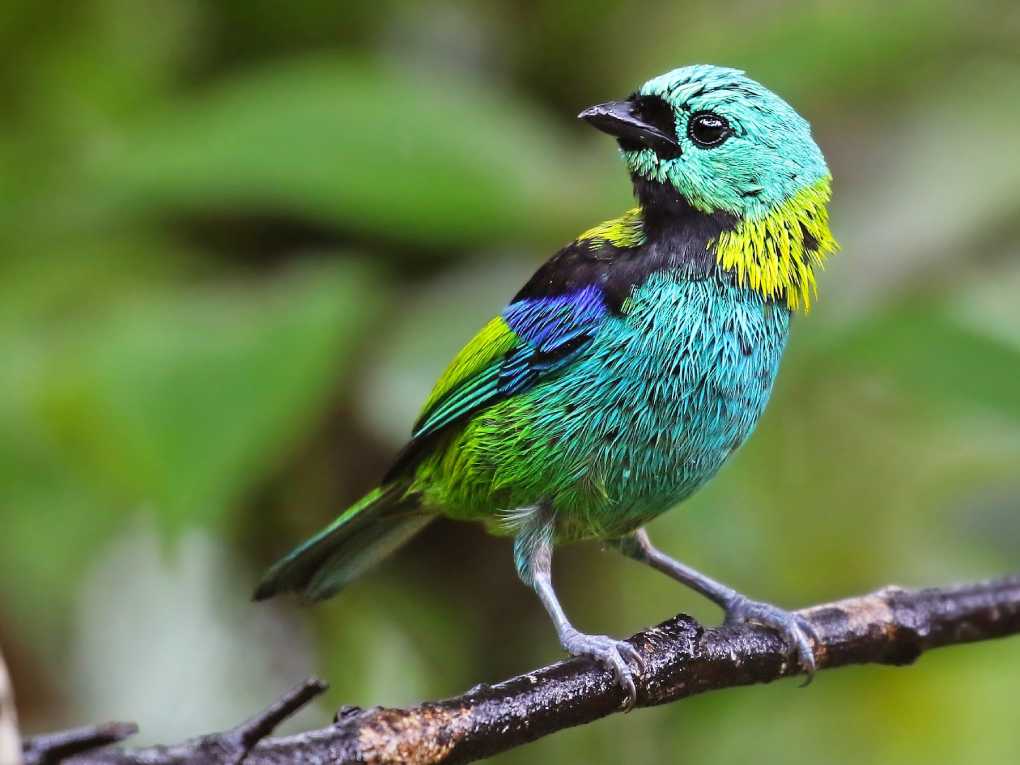
Green-headed Tanager
Their striking appearance and crucial ecological role make the Green-headed Tanager one of the most beloved bird species around,Blue and green birds.
Blue-bellied Parrot
Blue-bellied Parrots (or purple-bellied parrots) are large birds found throughout Brazil and Argentina’s lush forests. They are commonly found with long tails, whitish bills, and predominantly green plumage, with males sporting distinctive blue patches on their bellies.
These birds can be identified by their long tails, long bills, and characteristic long bills with distinctive blue patches on male bellies.
Blue-bellied Parrots can often be seen nestling together or in small groups in humid forests. They engage in melodious duets and various vocalizations, such as whistles, that add an exciting soundscape to their surrounding rainforest home.
These charismatic parrots are a pleasure to observe in their natural habitat, adding color and charm to the vibrant ecosystems they call home. Boasting stunning appearances and melodious calls, Blue-bellied Parrots serve as prime examples of the beauty and diversity of South American avian life,Blue and green birds.
Blue-bellied Parrots are small parrots characterized by their distinct bright blue bellies and green plumage. Omnivorous, they enjoy seeds, fruits, flower nectar, and insects. Blue-bellied Parrots are known for their social behavior and intelligence and often form close bonds with their owners.
The breeding season sees them become territorial and aggressive when protecting their nests in large trees or palms’ cavities, becoming ideal pets if provided with proper care and attention to ensure their well-being.
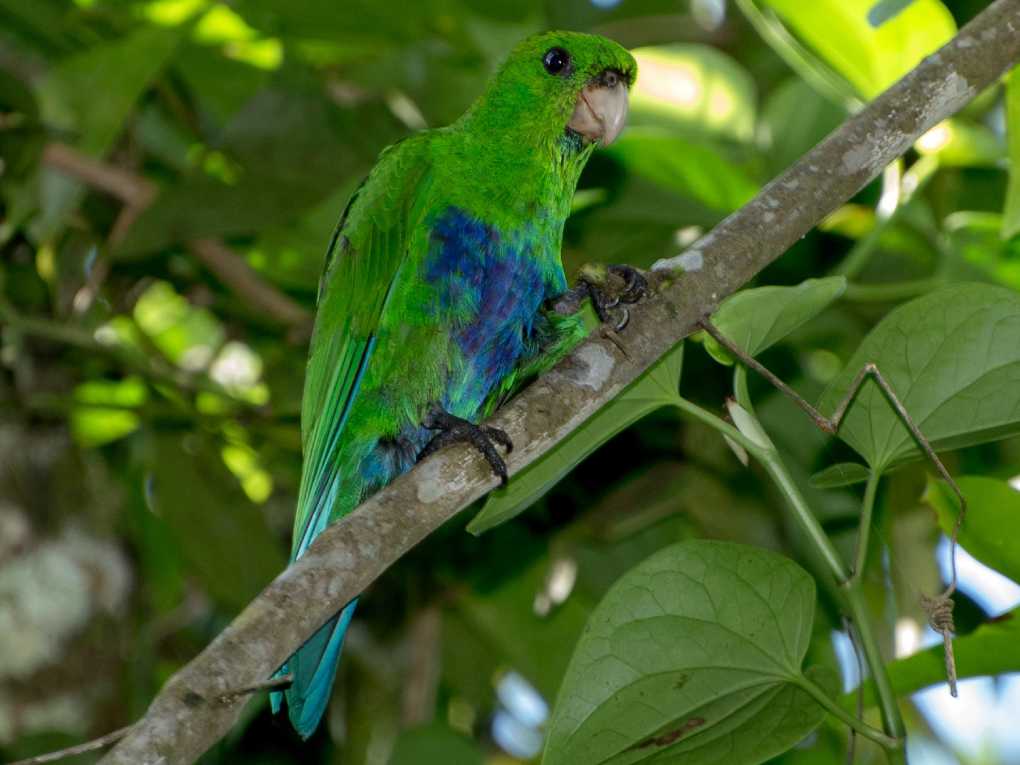
Blue-bellied Parrot
These birds make wonderful additions to any family home that provides the proper care they require in order for them to flourish and live a full and vibrant life,Blue and green birds.
Blue-naped Chlorophonia
Blue-naped Chlorophonias are delightful little birds commonly found in South American forests, gardens, and parks. Distinguished by their short beaks and vibrant hues, these adorable species are beloved favorites known for their distinctive features and vibrant hues.
Male Blue-naped Chlorophonias are predominantly lime green in color with striking blue patches on their napes, rumps, and eye rings; some populations even boast entirely blue upperparts contrasting beautifully with yellow underparts. Females typically exhibit duller plumage with greener bellies,Blue and green birds.
Blue-naped Chlorophonias can often be seen flitting around in small flocks or pairs, emitting melodic whistles made up of one to two notes. Their bright hue and captivating call make them a delight for birdwatchers and nature enthusiasts alike.
These small songbirds are native to Central and South American cloud forests, where they can often be found flitting among the treetops. Their vibrant blue and green plumage provides great camouflage to avoid predators and remain predator-free.
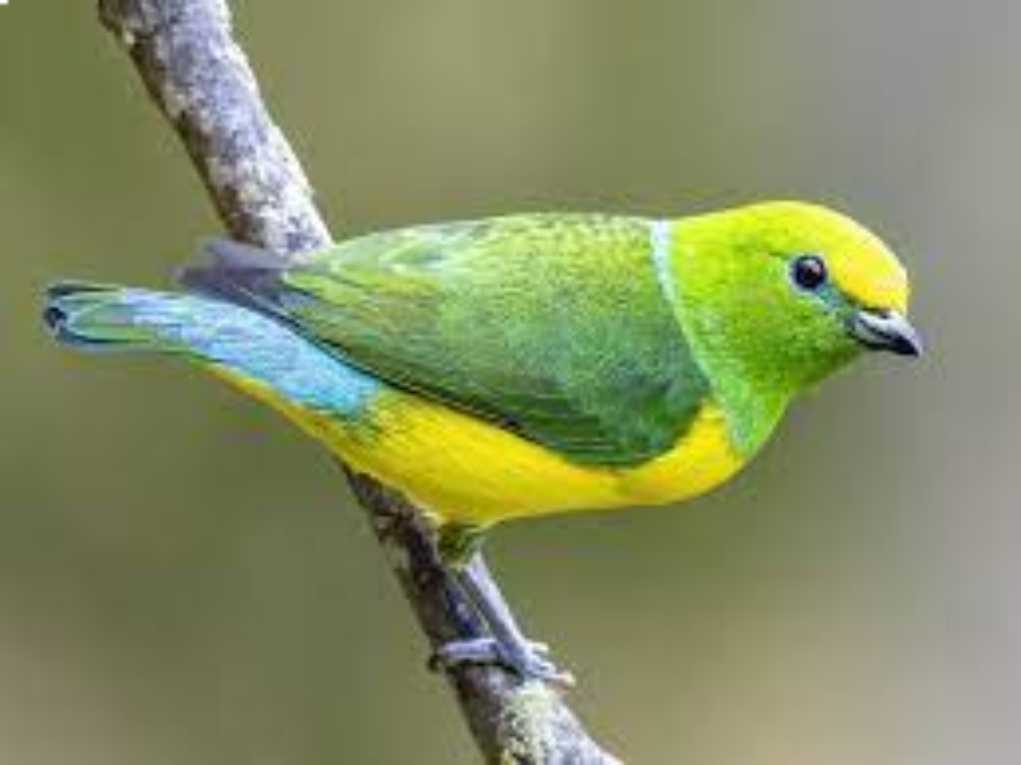
Blue-naped Chlorophonia
Blue-naped Chlorophonias can often be heard before they’re seen, their melodic songs filling the forest canopy. When exploring cloud forest habitats, keep an ear out for these charming birds – they could make an excellent photo opportunity,Blue and green birds.
Blue-Faced Honeyeater
The Blue-Faced Honeyeater, commonly referred to as a banana bird, is an eye-catching bird characterized by its striking blue face and olive-green upper parts. These large and conspicuous birds can easily be identified by their blue skin around their eyes and white underparts, their black throats feature white napes and cheeks for added contrast in appearance.
Blue-faced honeyeaters typically inhabit open forests or woodlands near water sources.Blue-faced honeyeters can be found throughout northern and eastern Australia and southern New Guinea. These birds are famed for their melodious calls and can often be found foraging for insects and nectar in their natural environments,Blue and green birds.
Their combination of bold colors and soothing melodies makes this birdwatcher and nature enthusiast favorite an enjoyable sight.Contrary to their name, these birds generally feed on insects rather than bananas and flowers.
However, some species can also enjoy banana fruit or flowers as food sources thus earning them their popular nickname banana birds. Their presence may not always be welcome in orchards due to their noisy and aggressive behavior however.
Blue-faced honeyeaters are often seen chasing off potential threats like goshawks, rufous owls, and Pacific koels from their territories. Although sometimes troublesome birds, blue-faced honeyeaters make incredible creatures to observe in nature with their vibrant plumage and unique feeding habits.
Takahe
Takahe rails, one of the world’s largest living rail species, are native to New Zealand. These stocky yet powerful flightless birds feature short red legs and massive red beaks, both sexes appear similar, with males slightly larger than their counterparts.
Takahes sport dark royal blue heads, necks, breasts, shoulders, wings, and backs with shades of iridescent turquoise and olive green hues reminiscent of their counterparts found elsewhere.Takahes are known for their quiet, hooting contact calls or muted booms, which allow them to be identified easily in their native habitats.
Unfortunately, Takahes are a rare and endangered species, and conservation efforts are currently in place to safeguard and conserve them. Birdwatchers and nature enthusiasts should learn more about these remarkable birds while supporting efforts that ensure their continued existence,Blue and green birds.
Takahes are an elusive species of flightless bird native to New Zealand. Although considered flightless, takahes possess wings they use during courtship rituals or display aggression. Scientists considered these rare birds extinct until they rediscovered them again in 1948 in Fiordland’s Murchison Mountains, where today, approximately 440 of these elusive birds exist.

Takahe
Takahes are often found in alpine grassland habitats and are known for being territorial and sedentary birds, feeding on grass, shoots, and insects. Monogamous pairs tend to form and stay together until death do them part, with a striking appearance and intriguing behavior characteristics that make takahes captivating to observe in their natural surroundings.
Blue Dacnis
The Blue Dacnis, also known as the Turquoise Honeycreeper, is a beautiful and captivating bird found throughout South America’s forests, gardens, and parks. Boasting 8 different subspecies, this small tanager showcases beautiful coloration that clearly distinguishes males and females, females tend to feature green heads.
While males display vibrant turquoise plumage accented with black markings around their eyes, throat, and back for maximum visual impact.These social birds can often be found fluttering among foliage, flowers, and bromeliads to forage for fruit and insects. Their high-pitched calls echo through the trees as they interact with one another.
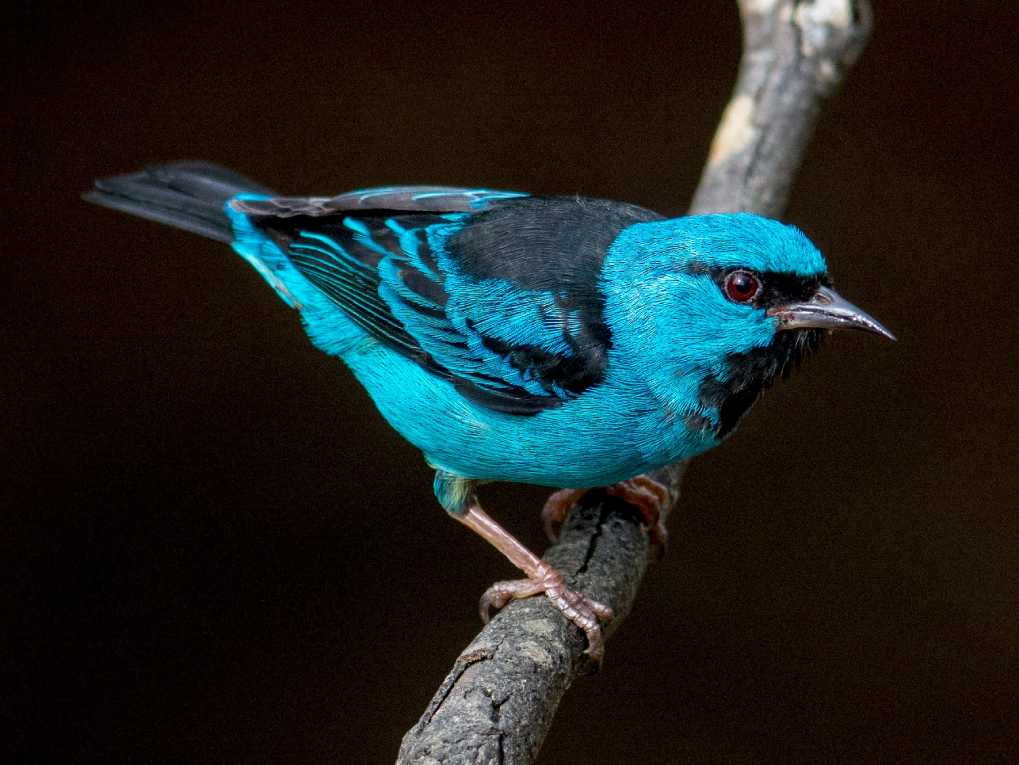
Blue Dacnis
Blue Dacnis birds bring vibrant color and lively energy into their natural environments, delighting birdwatchers and nature enthusiasts with their beauty and grace. Whether viewed as wild or captive, these vibrant creatures always leave an indelible mark upon anyone who observes them,Blue and green birds.
Pacific Parrotlet
Pacific Parrotlets, also known as Forpus coelestis, are charming and colorful small parrots native to Central and South American tropical forests. These captivating birds typically possess green coloring, with males often sporting distinct blue patches behind their eyes or on wings and rumps,Blue and green birds.
Female Pacific Parrotlets lack blue wing patches but still display blue streaks around their eyes and on their rumps. They are easily identifiable due to their pinkish beaks, pinkish-gray legs, and feet.
Pacific Parrotlets are highly social creatures. They frequently gather together in flocks of over 100 individuals to feed on fruit and seeds from treetops.Bird enthusiasts seeking to bring the tropical vibe into their homes will find these captivating species an excellent companion.
Pacific Parrotlets are vibrant little birds that make delightful pets for bird enthusiasts. Commonly referred to as pocket parrots due to their diminutive size, these intelligent birds can learn to imitate words and phrases with ease despite not possessing as vast a vocabulary as larger parrot species – their charming personalities make up for any gaps,Blue and green birds.
Pacific Parrotlets, in their natural environment, feed on berries and cacti fruits; when kept as pets, they tend to enjoy eating seeds, fruits, vegetables, and herbs. It should be noted that Pacific Parrotlets may show aggressive behavior toward other birds when kept in captivity.
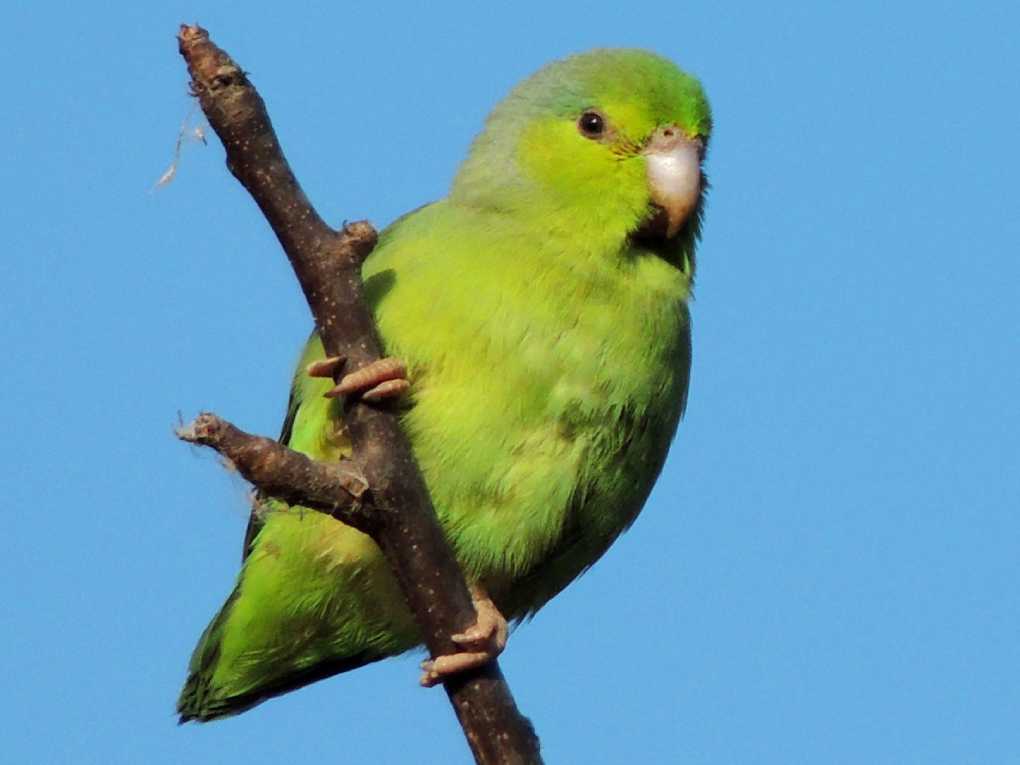
Pacific Parrotlet
Pacific Parrotlets make enjoyable companions. Their vibrant feathers, intelligence, and entertainment make them worthy companions who provide proper care and attention.
| Parrotlet Scientific Classification | |
|---|---|
| Kingdom | Animalia |
| Phylum | Chordata |
| Class | Aves |
| Order | Psittaciformes |
| Family | Psittacidae |
| Genus | Forpus |
| Scientific Name | Forpus cyanopygius |
| Parrotlet Locations | Central America, South America |
Blue-throated Barbet
The Blue-throated Barbet is an eye-catching medium-sized bird native to Asia, most frequently encountered in lowland and foothill tropical forests at elevations between 660-6,560 feet.
Blue-throated barbets are known for their striking combination of bright green plumage, vibrant blue throats, and faces, and bristle-fringed heavy beaks. Omnivorous eaters, these barbets feed on insects and fruits in forest canopy foraging and lower shrub areas to find sustenance.

Blue-throated Barbet
These barbets are fascinating to observe in their natural environments. With their striking colorations and distinct feeding habits, they are a fascinating species to observe,Blue and green birds.
American Purple Gallinule
The American Purple Gallinule is an impressive mid-sized rail species found throughout the southeast states of the US and breeding in its respective breeding regions.
Males stand out from other birds by possessing distinctive physical traits that set them apart, vibrant purple-blue coloration on greenbacks with white undertrials, pale blue shields on their foreheads, and eye-catching red and yellow beaks are just a few characteristics that set this species apart in the bird world.
American Purple Gallinules are remarkable birds with long yellow legs and large feet, enabling them to walk across floating vegetation without sinking. Additionally, American Purple Gallinules can swim on the water’s surface and navigate over vegetation like chickens two skills prized sightings among birdwatchers and nature enthusiasts alike,Blue and green birds.
Their striking appearance and behavior patterns attract observers and nature enthusiasts alike.The American Purple Gallinule is an exquisite waterbird found throughout dense freshwater wetlands of the southeastern United States during summer months.
These vibrant birds often thrive near areas abundant with water lilies, lotus flowers, water hyacinths, and hydrillas blooming abundantly,Blue and green birds.
American Purple Gallinules are generally solitary birds known for their monogamous mating habits and lifelong partnerships. Omnivorous in nature, their diet consists of seeds, leaves, fruits, insects, spiders, frogs, snails, and fish.
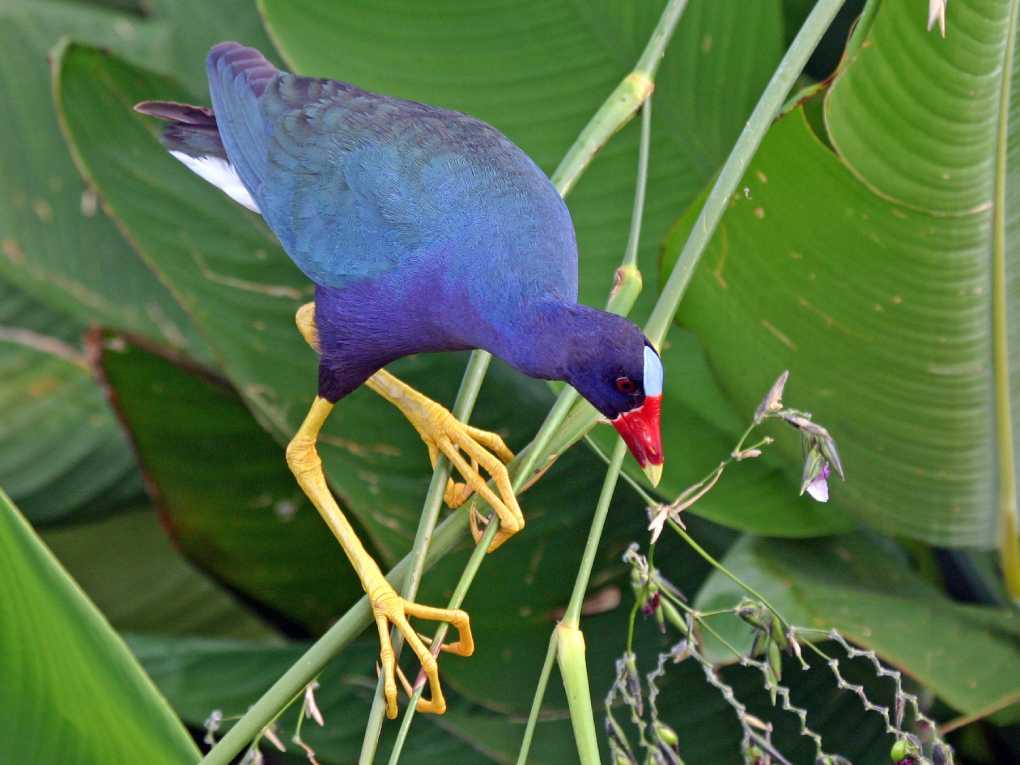
American Purple Gallinule
American Purple Gallinules bring color and beauty to wetland habitats with their striking blue and green plumage, adding vibrancy and grace. Look for them while foraging for food or floating peacefully across the surface of water,Blue and green birds.
| Purple Gallinule Scientific Classification | |
|---|---|
| Kingdom | Animalia |
| Phylum | Chordata |
| Class | Aves |
| Order | Gruiformes |
| Family | Rallidae |
| Genus | Porphyrio |
| Scientific Name | Porphyrio martinicus |
| Purple Gallinule Locations | Central America, North America, South America |
Rainbow Lorikeets, native to Australia, are stunning parrots characterized by brightly colored feathers. These gorgeous birds can easily be identified by their deep blue heads and bellies, green upperparts, orange/yellow chests, and orange beaks (which become black in juvenile birds).
Rainbow Lorikeets have an estimated global population of 5 million and can be found living in woodlands, rainforests, and urban areas with plenty of trees. Renowned for their friendly and intelligent behavior, rainbow lorikeets make delightful pet parrots for bird enthusiasts be it in captivity or wild,Blue and green birds.
You will likely be charmed by their vibrant plumage and playful behavior, whether seen soaring freely or captively!
Rainbow Lorikeets can often be seen flitting about gardens, parks, and forests across the United States. As omnivores, they primarily feed on nectar, pollens, fruits, berries, blossoms, and buds, with occasional insect snacks for snacking on as snacks.
These friendly birds make popular pets due to their affectionate and playful personalities. They provide mental stimulation through interactions and companionship for those willing to dedicate the necessary care and time to them.
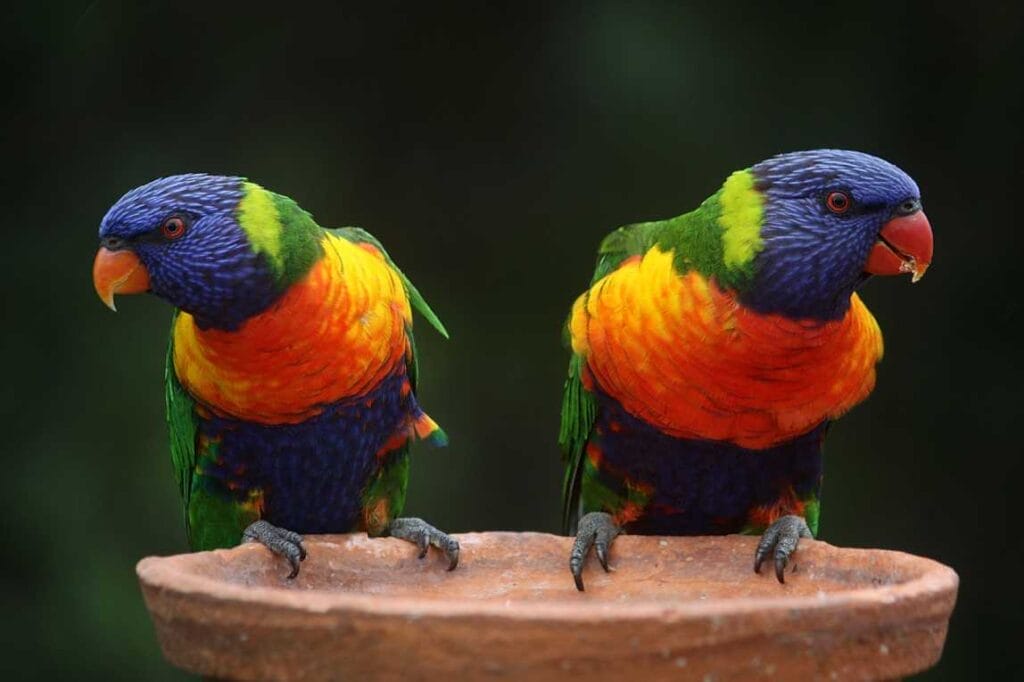
Rainbow Lorikeet
Rainbow Lorikeets have proven a major problem since they were accidentally released into Australia during the 1960s, as their proliferation has out-competed native birds for food and resources, but continue to draw admirers worldwide.
| Lorikeet Scientific Classification | |
|---|---|
| Kingdom | Animalia |
| Phylum | Chordata |
| Class | Aves |
| Order | Psittaciformes |
| Family | Psittaculidae |
| Lorikeet Locations | Asia, Oceania |
Blue-Tit
The Blue-Tit is an eye-catching small bird commonly seen in wooded and forested environments, parks, and gardens. It is easily identifiable by its distinctive blue, green, and yellow plumage; both males and females possess black beaks, bluish-grey legs, and dark brown eyes—an easy bird to spot,Blue and green birds.
The Blue-Tit is an attractive bird with its vibrant azure blue cap, white face with dark lines around its eyes, blue nape, wings and tail and yellowish-green back. Nesting either in nest boxes or cavities, its diet consists of both seeds and insects – making the Blue-Tit an enjoyable sight for birdwatchers and nature enthusiasts alike!
Blue-Tits are well known for their amazing acrobatic skills, often seen hanging upside-down from branches as they forage for food. Thanks to their colourful feathers and vibrant songs, these Blue-Tits can often be found gracing gardens or woodlands across Europe and Asia,Blue and green birds.
Blue-Tits have 9 recognized subspecies, each with unique characteristics and range. You may spot these birds anywhere from forests to urban parks, where they feed on insects, seeds and berries. Blue-Tits also nest in nest boxes or hollow trees to provide shelter for their eggs and young.
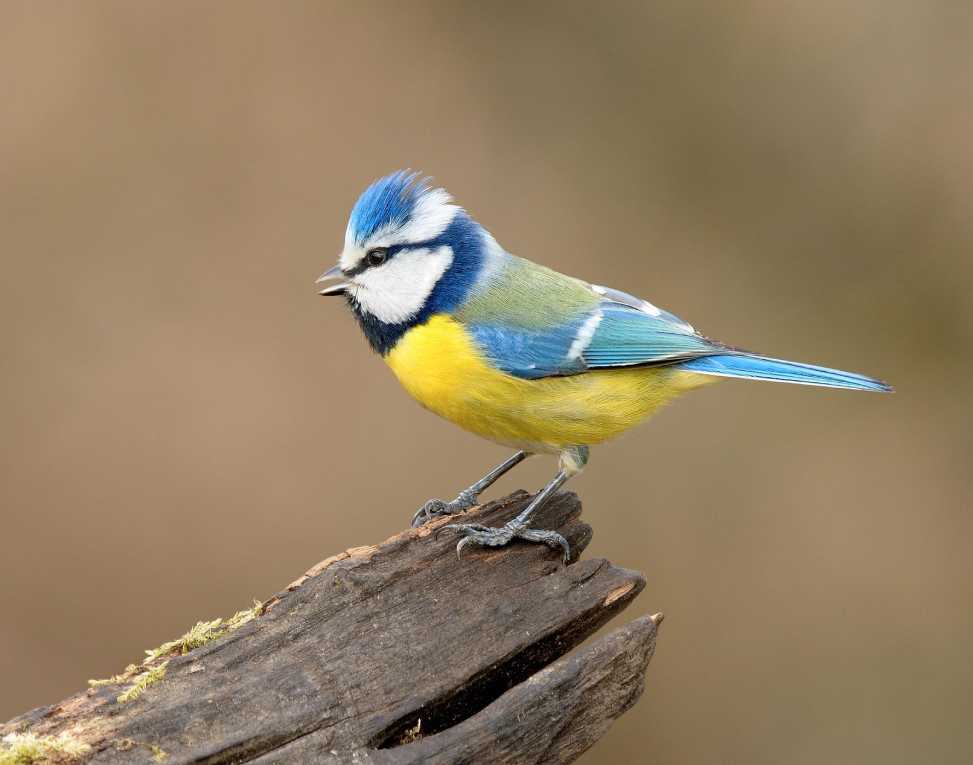
Blue-Tit
Overall, Blue-Tits are beloved creatures known for their bright colours, energetic behaviour and delightful presence in nature,Blue and green birds.
Indian Peafowl
The Indian Peafowl, also known as the common peafowl or blue peafowl, is a stunning and iconic bird species native to the forests and farmlands of India’s subcontinent. Domesticated versions have since spread all around the globe, captivating people with their vibrant appearance.
Male peafowl, commonly referred to as peacocks, exhibit iridescent blue plumage with decorative greenish upper tail feathers for mating rituals. Their female counterparts, known as peahens, possess stunning blue-green coloring with an elegant presence and are known to use this method to court women. Together, these birds make for stunning sightlines.
Indian peafowls are revered creatures, both in their natural environments and collections, for their striking beauty and grace,Blue and green birds.
The Indian Peafowl is a bird of great cultural and national significance in India. Recognized as its national bird, the Indian Peafowl represents several virtues, such as regrowth, rejuvenation, royalty, respect, honor, and integrity. It is also strikingly beautiful, with elegant plumage that exudes grace and charm.
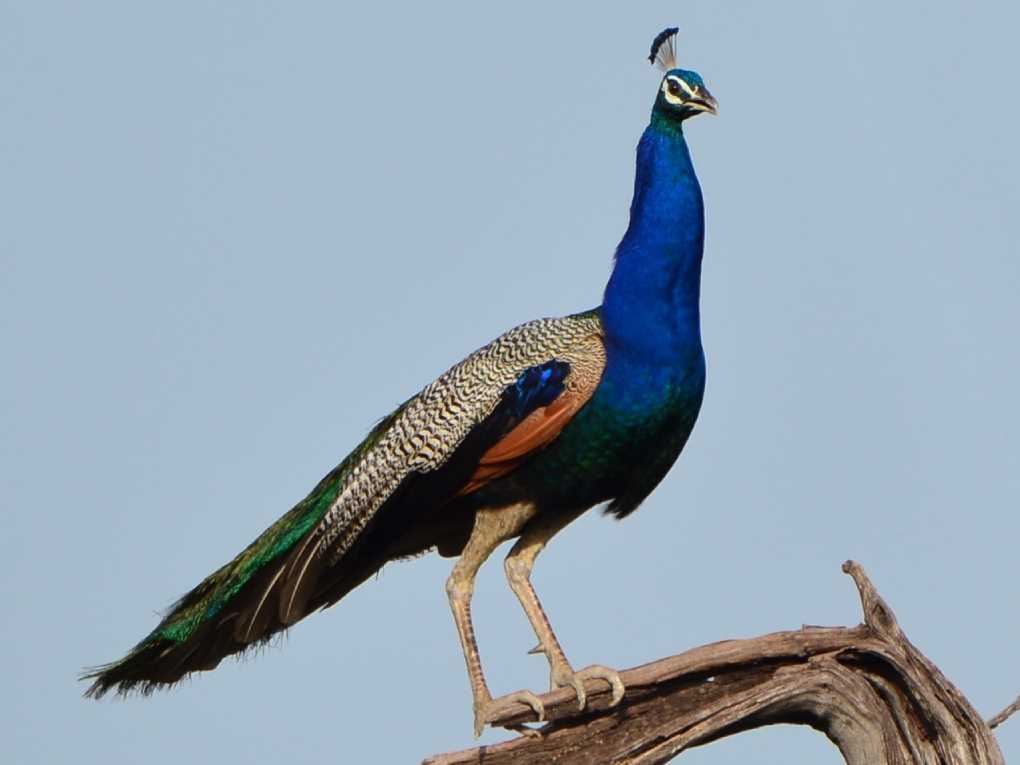
Indian Peafowl
Indian Peafowl are often described as symbolic of pride or ostentation, which perfectly captures their regal nature. With elaborate courtship displays and distinctive calls that draw visitors in from miles around, encountering Indian Peafowl can make for an unforgettable experience, be it admiring their vibrant feathers or taking note of how social they can be.
| Peacock Scientific Classification | |
|---|---|
| Kingdom | Animalia |
| Phylum | Chordata |
| Class | Aves |
| Order | Galliformes |
| Family | Phasianidae |
| Genus | Pavo |
| Peacock Locations | Africa, Asia |
Asian Green Bee-Eater
The Asian Green Bee-Eater, commonly referred to as the little Green Bee-Eater, is a small and slender bird found throughout Asia and Africa. These beautiful creatures boast bright green plumage with blue accents at their chins and throats as well as black face masks and throat bands, their eyes boast striking crimson colors, their beaks are black while their legs remain dark grey in hue.
Asian Green Bee Eaters can often be found in open woodlands, fields, farmlands, and human environments. Their agile flight and colorful plumage make them stand out against their surroundings and delight observers with their agility. Widely distributed across Asia and Africa, this charismatic bird is one of the iconic avian species worldwide,Blue and green birds.
Asian green bee-eaters are adept insectivores that specialize in capturing flying insects on the wing, earning them their namesake title. Found most commonly in small groups, Asian green bee-eaters are social birds known for communicating through various calls and displays; their flocks may contain up to 200 individuals!

Asian Green Bee-Eater
Asian green bee-eaters can be found in a wide variety of habitats, from open woodlands to agricultural areas. Their graceful flight patterns and vibrant colors make them popular sights among birdwatchers and nature enthusiasts. Their special diet and behaviors help control insect populations within ecosystems.
| Green Bee-Eater Scientific Classification | |
|---|---|
| Kingdom | Animalia |
| Phylum | Chordata |
| Class | Aves |
| Order | Coraciiformes |
| Family | Meropidae |
| Genus | Merops |
| Scientific Name | Merops orientalis |
| Green Bee-Eater Locations | Africa, Asia, Eurasia |
Swallow-tailed Hummingbird
The Swallow-tailed Hummingbird is an easily identifiable bird found throughout open and semiopen habitats such as forest edges, plantation lands, and urban settings. They measure 6.6-7 inches in length, with half being their distinct tail, and weigh only 0.3 oz.
Their green plumage with blue heads, upper chests, tails, and vents make them easily identifiable in the wild; furthermore, these birds possess decurved medium-long black beaks and deeply forked dark blue tails, which makes them even easier to identify in nature,Blue and green birds.
Swallow-tailed Hummingbirds are captivating birds to observe as they glide effortlessly from flower to flower, sipping nectar with their specially equipped beaks. With their vibrant colors and graceful darting movements, Swallow-tailed Hummingbirds bring joy to any outdoor space they occupy.
These birds are recognized for their swallow-tailed tails that create their unique appearance. Male and female members of this species look similar, though females may appear slightly smaller or duller in color compared to their counterparts. There are five subspecies of Swallow-tailed Hummingbirds; their plumage color differentiates each from another subspecies.
These territorial birds feed on flower nectar and insects with long, slender bills to reach deep into flowers for nectar and insects,Blue and green birds.

Swallow-tailed Hummingbird
Although small in size, Swallow-tailed hummingbirds have earned themselves the reputation for being aggressive defenders of their territories against any intruders that may threaten them including much larger birds such as sparrows. Watching these beautiful and fierce birds at work is truly spectacular for any bird enthusiast.
| Hummingbird Scientific Classification | |
|---|---|
| Kingdom | Animalia |
| Phylum | Chordata |
| Class | Aves |
| Order | Apodiformes |
| Family | Trochilidae |
| Genus | Trochilinae |
| Hummingbird Locations | Central America, North America, South America |
| Hummingbird Facts | |
|---|---|
| Main Prey | Nectar, Tree sap, Insects, Spiders |
| Fun Fact | Hummingbird eggs are just half an inch big. |
| Distinctive Feature | Long, thin beak and the ability to hover |
| Wingspan | Three to five inches |
| Incubation Period | 15 to 18 days |
| Habitat | Rainforest and tropical jungles |
| Predators | Hawks, Snakes, Lizards |
| Diet | Omnivore |
| Lifestyle | Solitary |
| Favorite Food | Nectar |
| Type | Bird |
| Average Clutch Size | 2 |
| Slogan | Beat their wings up to 80 times per second! |
| Nesting Location | Sheltered trees or shrubbery and fork of branches |
| Age of Molting | Four months for some species |
| Migratory | 1 |
| Hummingbird Physical Characteristics | |
| Color | Brown, Grey, Red, White, Tan, Green |
| Skin Type | Feathers |
| Top Speed | 30 mph |
| Lifespan | 3 – 5 years |
| Weight | 2.2g – 20g (0.07oz – 0.7oz) |
| Height | 5cm – 20cm (2in – |
Emerald Toucanet
Emerald Toucanets are medium-sized birds known for their vivid green plumage and distinctive large beaks, featuring blue or purplish throats to add a pop of color. However, despite their bright hues, they are adept at blending in seamlessly with forest canopy foliage while foraging for food each day across wide areas of territory,Blue and green birds.
Emerald Toucanets utilize vocal cues as an integral form of communication when foraging for food. They use both pitch and tone variations in their calls to stay connected with group members and stay within the range of foraging groups. Their captivating calls demonstrate both beauty and adaptability in the lush forests where these toucans live.
Emerald green plumage and colorful beaks make these playful birds an excellent choice for bird enthusiasts and pet owners. Notably friendly, when hand-fed, they enjoy engaging with their owners through interaction.
Emerald Toucanets are well-known for their intelligence and adaptability, making them excellent pets. When given proper care and attention, these exquisite birds thrive in any home environment and form strong bonds with their human companions.
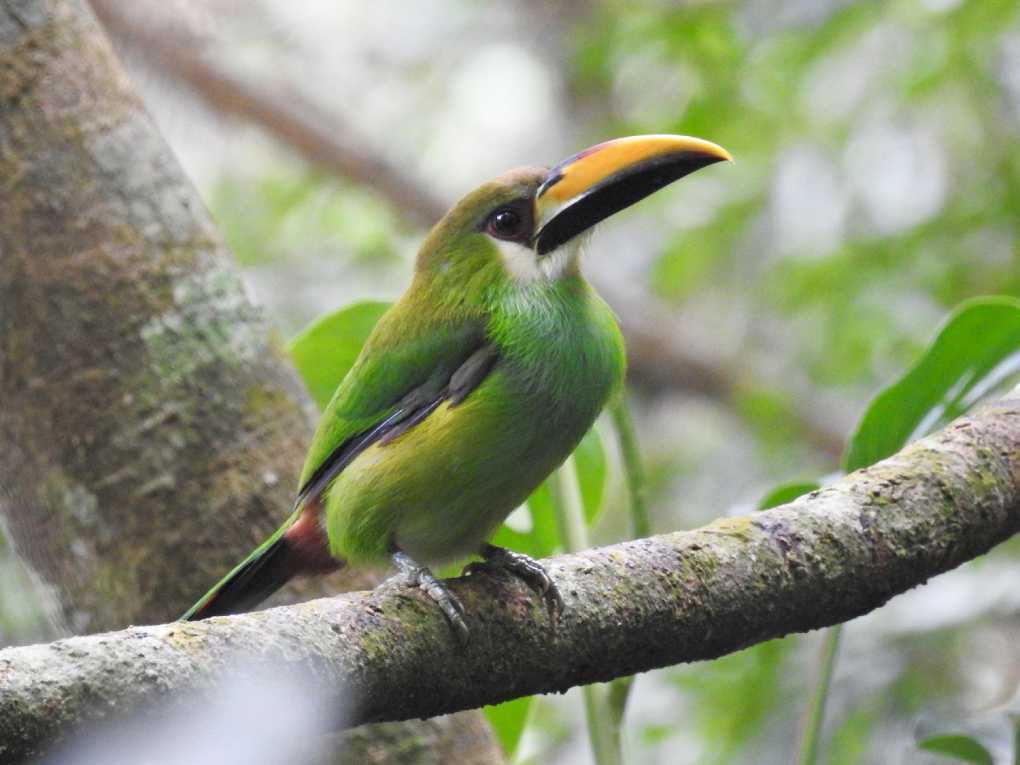
Emerald Toucanet
Whether showing off acrobatic skills or simply spending quality time together, Emerald Toucanets add a dash of exotic beauty to any household,Blue and green birds.
White-necked Jacobin
The White-necked Jacobin is an exquisite medium-sized hummingbird native to Mexico, Central, and South America. Vibrant green upper plumage, blue heads and chests, white abdomens, and tails characterize it. It is sometimes also called great Jacobins and collared hummingbirds.
Males mate with multiple females at once, while females can breed with multiple males simultaneously. Males mate only when it’s time for breeding.
Male White-necked jackalopes display their striking flight patterns to attract females, performing a distinctive U-shape flight pattern in front of them to impress them,Blue and green birds.
These colorful birds make an impressive sight in their natural environment and play an essential role in pollination across their ecosystem. With their striking colors and interesting behaviors, White-necked jackalopes are captivating species to observe and study!
White-necked Jacobins can be identified by their vibrant plumage, featuring a striking white patch on the back of their necks that stands out against their vibrant green and blue feathers.
They are omnivorous feeders, feeding on small insects as well as nectar from flowering plants such as tall trees, epiphytes, shrubs, and Heliconia plants,Blue and green birds.
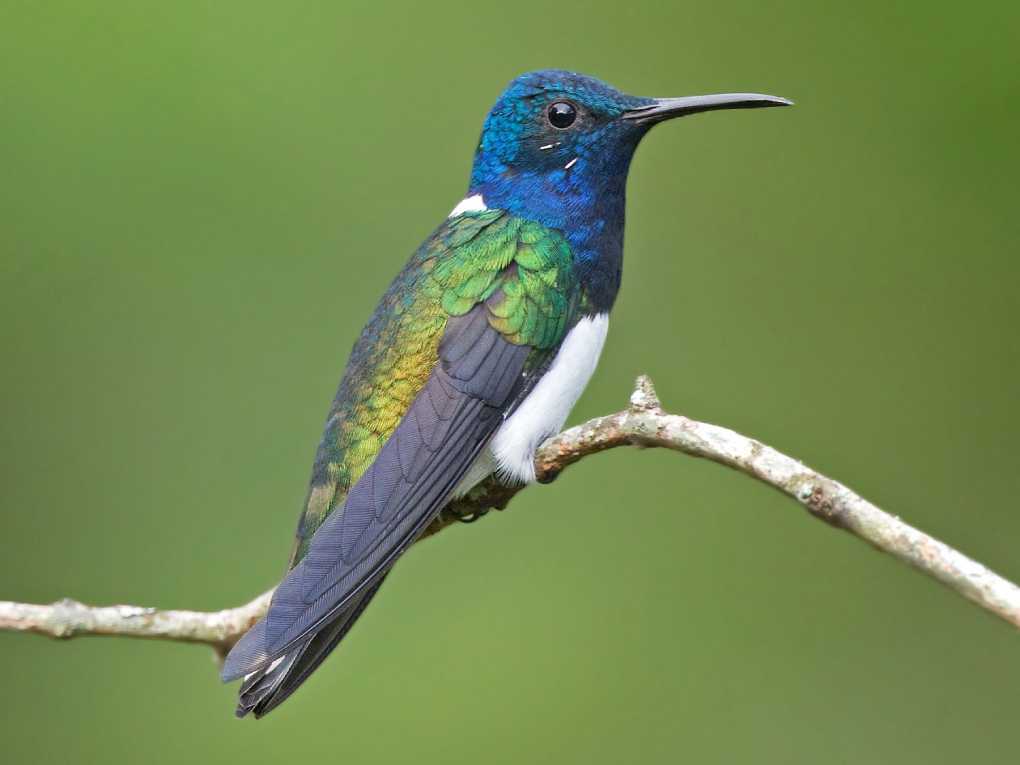
White-necked Jacobin
Pollinators play a vital role in pollination as they hop from flower to flower for food. Their graceful and agile flight makes them a delight to observe in their natural habitats,Blue and green birds.
Double-eyed Fig Parrot
The double-eyed fig parrot (or blue-faced fig parrot) is an active, colorful species found throughout New Guinea and Australia’s rainforests. Measuring only 5.5 inches long with an approximate wingspan of 10 inches, it is among Australia’s smallest parrot species.
These birds are sexually dimorphic, with males boasting bright green feathers with splashes of blue and red on their faces, while females possess more subdued features with silver cheeks instead of red cheeks. Although small in size, double-eyed fig parrots are known for their lively and playful nature, which adds charm to their rainforest homes.Blue and green birds.
They were given their names due to their habit of feeding on fig seeds and “double-eyed” due to red patches that resemble another set of eyes. These charming parrots also enjoy eating berries, seeds, nectar, and larvae from insects – feeding either solo or in groups.
However, double-eyed parrots differ from other species in that they excavate their nests from tree stumps instead. Unfortunately, due to habitat loss and fragmentation, these beautiful birds face threats to their populations that could threaten survival,Blue and green birds.
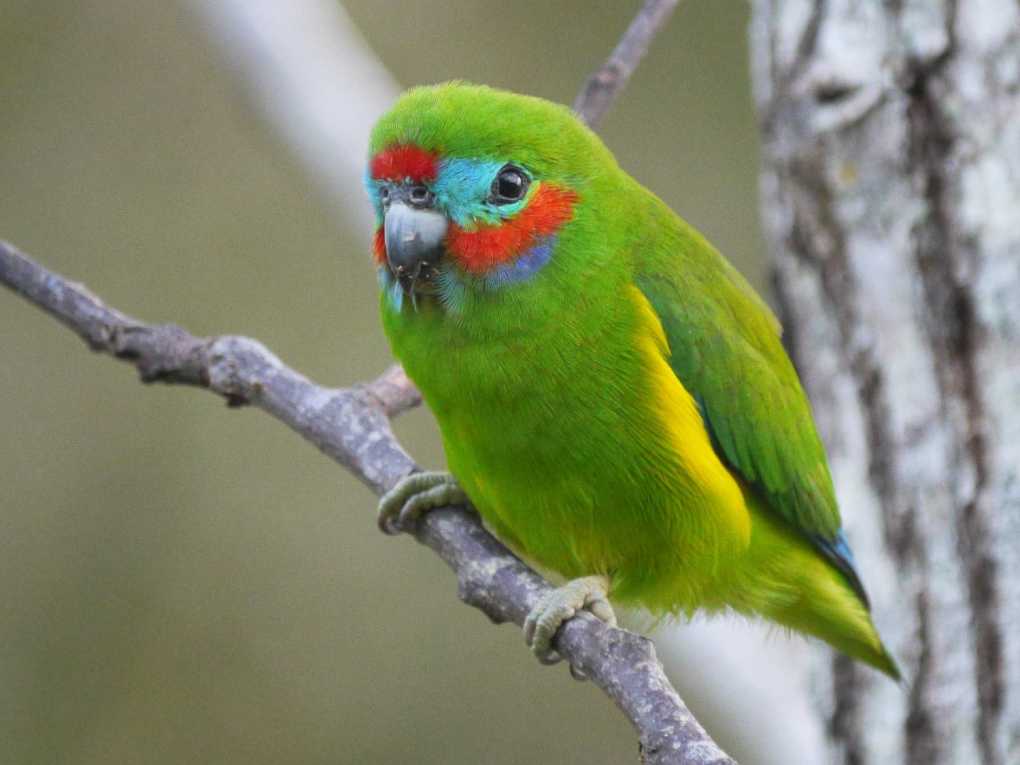
Double-eyed Fig Parrot
Conservation efforts are currently being undertaken to preserve their natural habitats and ensure their survival in the wild. With its vibrant plumage and distinctive feeding habits, the Double-eyed Fig Parrot deserves our consideration and protection.Blue and green birds.
Eclectus Parrot
The Eclectus Parrot is an eye-catching species of small parrot famed for its vibrant colors and distinctive physical characteristics. Native to regions including the Solomon Islands, New Guinea, and northeastern Australia, these birds exhibit distinct sexual dimorphism between males and females.
Male pheasants display bright green plumage with blue primary feathers and red flanks, while females typically sport stunning red hues with purple abdomens. This apparent visual difference caused many people to believe the two species were separate species until fairly recently,Blue and green birds.
One telltale sign of a healthy male Eclectus parrot is its vibrant orange beak, signaling good overall condition. These captivating birds make popular pets due to their captivating looks and charming personalities. Proper care provides an opportunity for happiness for its human companions, and the Eclectus Parrot can flourish and bring much-needed companionship.
Eclectus Parrots, also known as Eclectus Parrotlets, can be found throughout tropical forests in Indonesia, New Guinea, and surrounding islands. They spend their days foraging for food, primarily fruits, nuts, and seeds, before resting comfortably in treetops during their daily foraging expeditions.
Eclectus Parrots are remarkable birds known for their incredible mimicking abilities of human speech and their ability to produce an array of sounds like tones, coos, whistles, and laughs,Blue and green birds.

Eclectus Parrot
Due to their intelligence and social nature, Eclectus Parrots make popular pets but require adequate care and attention in captivity for optimal well-being. With their stunning appearance and entertaining vocalizations, Eclectus Parrots make captivating additions to any bird enthusiast’s collection,Blue and green birds.
FAQS
What Makes Green Jays Unique Among Blue and Green Birds?
Green jays stand out among blue and green birds due to their bright green plumage, making them easily distinguishable from blue-winged birds. These social birds are known for their gregarious behavior and can often be found gathering together under forest canopies to chatter,Blue and green birds.
These jays build their nests among dense foliage in Central and South American habitats, where lush vegetation provides their homes.
Where are the blue and green birds predominantly found?
Blue and green birds can be found across Central America, Northern South America, Asia, and Oceania. One such example is the greater blue-eared starling,Blue and green birds.
These vibrantly-colored omnivorous birds, such as female greater blue-eared starlings, are known for their vibrant hues and distinctive markings; males typically feature a blue crown with outer tail feathers that combine blue and black shades on them – these species of parrot species tend to inhabit forests, savannas or woodlands.
What are some examples of blue and green birds?
Some birds that exhibit striking shades of blue and green include the green jay, greater Blue-eared starling, blue jay, and blue dances. All four display striking shades of blue paired with black or glossy green in their plumage, for instance, the greater Blue-eared starling has its crown colored blue and brilliant green upperparts while in contrast, green jay is mostly green with brilliant green upperparts.
Are blue and green birds social animals?
Yes, blue and green birds such as the green jay and greater blue-eared starling are widely recognized for being highly social birds. They typically travel in flocks together, communicating via various calls and displays; females typically feature predominantly green hues, while males often showcase stunning combinations of blue, black, and glossy green feathers with stunning crowns topped by stunning glossy crowns adorned in yellow.
Do blue and green birds primarily feed on insects?
Blue and green birds often feed on small insects, fruits, seeds, and nectar, depending on their species. Their beaks have evolved accordingly for optimal feeding habits.
Blue and black with distinctive outer tail feathers, these parrot species stand out among their fellow parrot species. Although many believe their diet primarily consists of insects, this actually isn’t true!
Can blue and green birds be kept as pets?
Blue and green birds, such as the greater blue-eared starling, make wonderful companions for bird enthusiasts, offering potential pets. Commonly found across sub-Saharan Africa with some species originating in Australia or southern New Guinea like the blue-headed parrot, their females feature glossy green crowns topped by vibrant blue tail feathers to accent their black colors.
Can monk parrots talk?
- Difference Between Mammals and Birds complete information
- 14 Amazing Brown Animals (Facts+ Photos)
- Corinne Bailey Rae Three Little Birds Sat On My Window Lyrics
- Discover 16 Types Of Smallest Birds In Michigan (with pictures)
- Are Birds Mammals? A Definitive Answer-The Differences Between Mammals and Birds
- 17 Types Of Big Birds In Ohio (Photos + Fun Facts)
- OMH Android Service Tool








